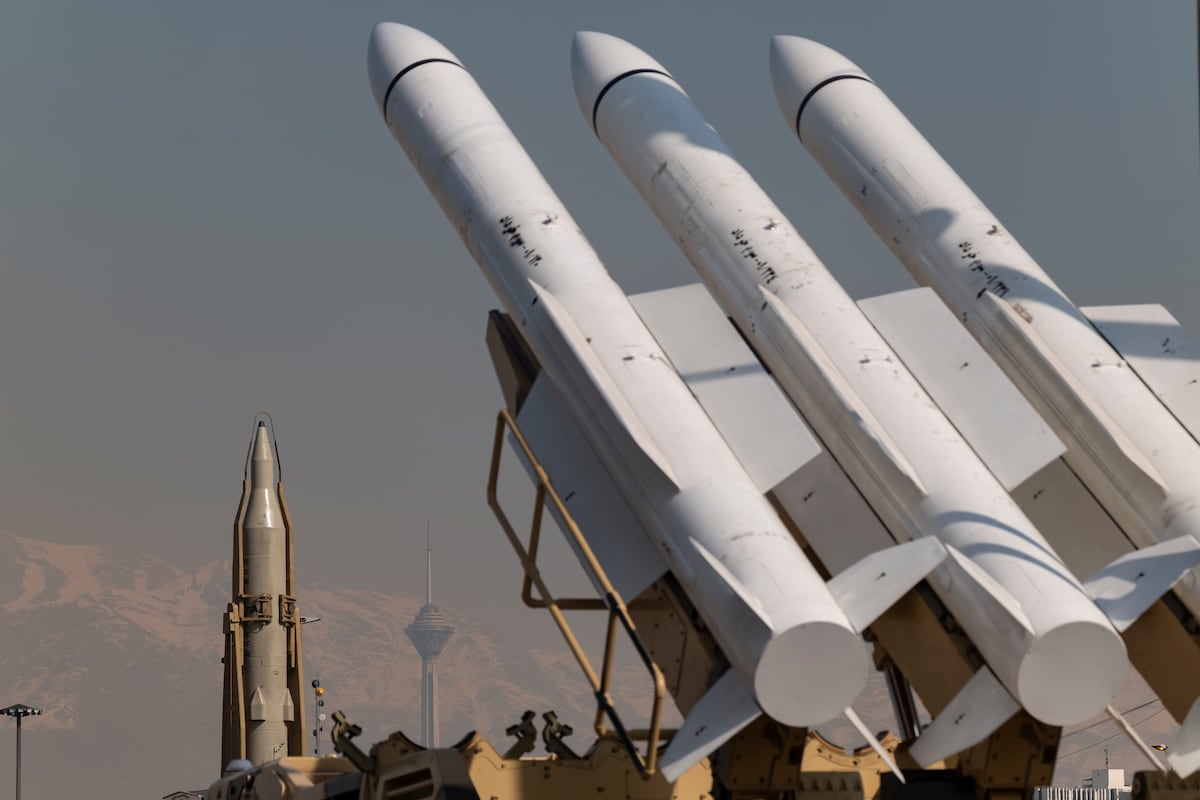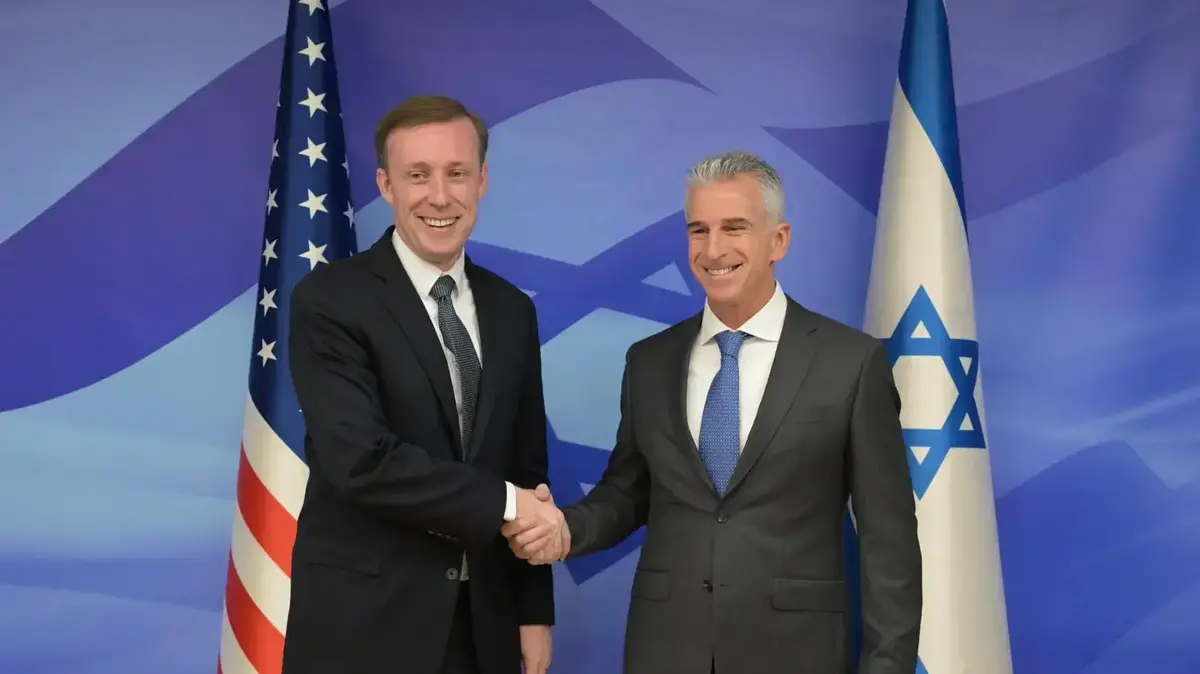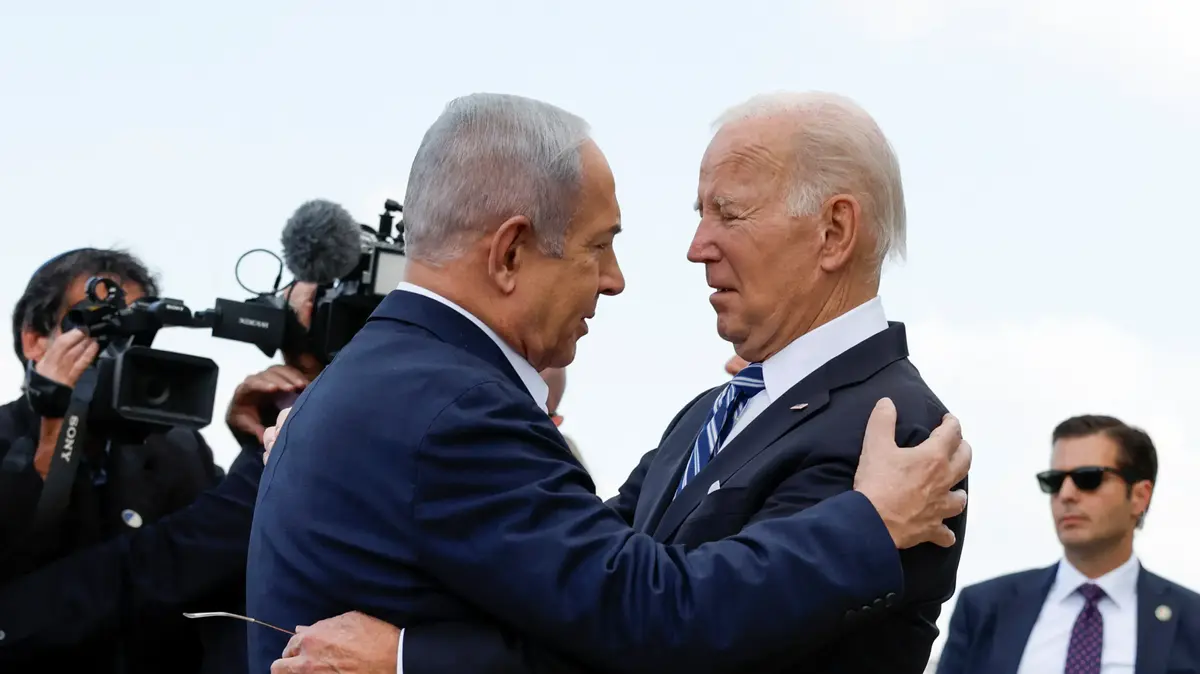- Click to share on Facebook (Opens in a new window)
- Click to share on Twitter (Opens in a new window)
- Click here to share on LinkedIn (Opens in a new window)
- Click to email a friend (Opens in a new window)
Washington (CNN) - President Donald Trump tweeted Sunday night that the United States has “reasons to believe we know” who is responsible for the attack on an oil field in Saudi Arabia and that his country is “ready to fire depending on the check".
“Saudi Arabia's oil supply was attacked. There are reasons to believe that we know the culprit, we are ready to shoot depending on the verification, but we are waiting for the kingdom to inform us who believes it was the cause of this attack, and under what terms we would proceed, ”Trump tweeted.
- Oil prices rise after attack on Saudi Arabia facilities
Trump's tweet, which seemed to raise the option of a US military response, served to increase tensions in a region that was already at the limit after Saturday's bold attack on the Saudi oil field.
Trump used similar language in June when he announced that he had suspended an attack on Iran just when the United States was “ready to fire,” in a response proportional to the demolition of a US drone by Tehran, because he decided it would cause too many deaths. .
On Saturday, coordinated attacks on key oil facilities in Saudi Arabia, among the world's largest energy production centers, interrupted 5% of the world's daily oil supply. Yemen's Houthi rebels claimed the attacks, but they often have the backing of Iran.
Although Trump did not name Iran in his tweet, the attack has caused another increase in tensions between the United States and Tehran. Before Saturday, there were signs that the United States would be open to further negotiations and even to a possible meeting later this month between Trump and the president of Iran, Hassan Rouhani.
A day after US Secretary of State Mike Pompeo blamed Iran for the attack on Saudi oil facilities and argued that "there is no evidence that the attacks came from Yemen," a senior administration official handed over to CNN information that supports Pompeo's claims. The Secretary of State did not provide evidence, but the official said satellite images provided to CNN show that oil facilities were attacked from the northwest, suggesting an attack from Iraq or Iran, among other information.
On Saturday, Iranian Foreign Ministry spokesman Seyyed Abbas Mousavi rejected the accusation that Iran was behind the attack.
"Such obtuse accusations and inappropriate comments in a diplomatic context are incomprehensible and meaningless," he said, adding that "even hostility needs a certain degree of credibility and reasonable frameworks, US officials have also violated these basic principles."
- The attack on the Saudi oil field changes the rules of the game in the Gulf confrontation
Iran’s foreign minister turned to Twitter to issue a similar refusal.
"Having failed in the 'maximum pressure', @SecPompeo resorts to 'maximum deception'," Javad Zarif wrote. "The United States and its clients are trapped in Yemen due to the illusion that the superiority of the weapon will lead to military victory. Blaming Iran will not end the disaster. Accepting our proposal of April 15 to end the war and start the talks could. ”
Trump tweeted later Sunday that it is "incorrect" to say that he is "willing to meet with Iran, 'Without condition'," a contradiction of his own administration. Treasury Secretary Steven Mnuchin said Thursday that the president "said he would sit with Rouhani without conditions."
Evidence that Iran would be after the attack, according to the US
The US official noted the angle at which Saudi oil facilities were attacked, the amount of impact points and other information to argue that it is unlikely that the attacks were carried out by Yemen. Instead, the official suggested that the attack probably originated in Iran or Iraq.
"It is very difficult to see how these things could have come from other side than Iran or Iraq," said the senior US administration official.
The official said 19 Saudi targets were reached in Saturday's attack and argued that such an attack could not be carried out with 10 drones, which the Houthis claimed to have used.
"You can attack 19 targets with 10 drones like that," the official said.
- Pompeo blames Iran for drone attacks in the Saudi oil field
The official, based on commercial satellite images shared with CNN, also said that "all the points of impact in the Saudi facilities were on the northwest side of them, which is difficult to do from Yemen." The official could not say whether it is possible that Yemen drones have turned to attack the northwest facilities.
Military experts examine satellite images
Three CNN military experts have examined private satellite photos.
Retired colonel Cedric Leighton, an intelligence expert with an image focus, said the photographs help support the Trump administration's claim that the drones probably came from Iraq or Iran, but warned that they are not definitive.
“This is the work of a sophisticated actor (most likely from a State). The precise nature of the intelligence used to carry out the selection of objectives, the planning of the mission that was carried out to avoid radar detection, as well as the selection of the objectives shows a solid capacity that would probably be the work of a government or government-sponsored group, ”Leighton told CNN on Sunday.
"The drones probably left southern Iraq or Iran," he said.
Retired General Mark Hertling said the images "really don't show anything, other than quite good accuracy in the attack on the oil tanks." Retired Admiral John Kirby echoed this point, stating that "there is nothing you see in these images that confirms a launch from any particular place."
- Drone attack destroys half of Saudi Arabia's oil capacity
“I am surprised at the accuracy of the attacks. Almost a flat tire, "said Kirby." Certainly possible with (unmanned aerial vehicles). But, again, that really confirms nothing. ”
Iran's response
Rouhani made no specific reference to the attack on Saudi oil facilities in a speech on Press TV on Sunday, but accused the Americans of leading a "war operation" by "supporting the United Arab Emirates and Saudi Arabia, transferring weapons. and providing intelligence. "
"What is happening today in this region has created concern in most countries of the world," he said.
Earlier Sunday, White House chief counsel Kellyanne Conway said Trump "has many options on the table" when it comes to responding to attacks.
"The president will always consider his options," Conway said on "Fox News Sunday" when asked if Trump would still sit with Rouhani in the current circumstances. “We have never committed ourselves to that meeting at the General Assembly of the United Nations. The president just said he is reviewing it. ”
Kevin Liptak of CNN contributed to this report.
Petroleum







